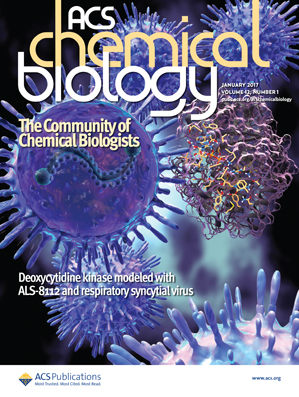multi - tac:用多种免疫细胞共接合物靶向实体肿瘤。
IF 3.5
2区 生物学
Q2 BIOCHEMISTRY & MOLECULAR BIOLOGY
引用次数: 0
摘要
肿瘤免疫微环境(TIME)中多种免疫成分协同作用,促进或阻碍肿瘤免疫治疗。协同共同管理多个免疫细胞与单一药物的高级抗肿瘤免疫仍然是可取的,但具有挑战性。本文介绍了一种基于三正交连接子(T-Linker)的多模态靶向嵌合体(Multi-TAC)平台,该平台可以在TIME内实现单药物介导的多种免疫细胞类型的肿瘤靶向共参与,从而增强免疫治疗。本文章由计算机程序翻译,如有差异,请以英文原文为准。
Multi-TACs: Targeting Solid Tumors with Multiple Immune Cell Co-engagers.
Multiple immune components in the complex and heterogeneous tumor-immune microenvironment (TIME) work cooperatively to promote or impede cancer immunotherapy. Synergistically co-managing multiple immune cells with single agents for advanced antitumor immunity remains desirable but challenging. This In Focus article introduces a triple orthogonal linker (T-Linker)-based multimodal targeting chimera (Multi-TAC) platform, enabling the single-agent-mediated tumor-targeted co-engagement of multiple immune cell types within TIME for potentiated immunotherapy.
求助全文
通过发布文献求助,成功后即可免费获取论文全文。
去求助
来源期刊

ACS Chemical Biology
生物-生化与分子生物学
CiteScore
7.50
自引率
5.00%
发文量
353
审稿时长
3.3 months
期刊介绍:
ACS Chemical Biology provides an international forum for the rapid communication of research that broadly embraces the interface between chemistry and biology.
The journal also serves as a forum to facilitate the communication between biologists and chemists that will translate into new research opportunities and discoveries. Results will be published in which molecular reasoning has been used to probe questions through in vitro investigations, cell biological methods, or organismic studies.
We welcome mechanistic studies on proteins, nucleic acids, sugars, lipids, and nonbiological polymers. The journal serves a large scientific community, exploring cellular function from both chemical and biological perspectives. It is understood that submitted work is based upon original results and has not been published previously.
 求助内容:
求助内容: 应助结果提醒方式:
应助结果提醒方式:


